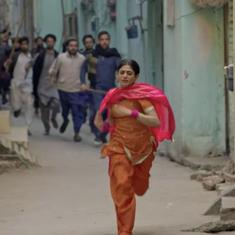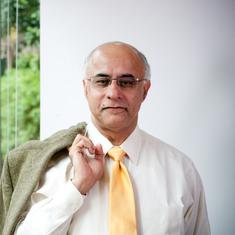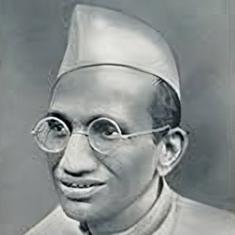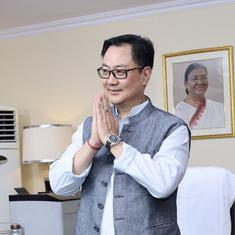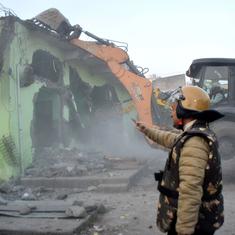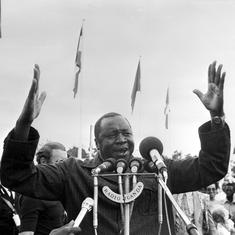Aizawl’s title victory was supposed to and did bring the house down. So stupendous it was that football fans across the country (with the exception of Mohun Bagan fans, who finished second) put their loyalties to the side and rejoiced in the moment.
This was it; after Bengaluru FC’s run to the AFC Cup final brought Indian football eyeballs on a continental level, here was something they could proudly share with other football fans throughout the world. Yours truly is not a big fan of the Leicester comparison, but here was the chance for the average Indian football fan to claim a parallel in his/her own background and be proud of it.
Indian football had a chance to gain national and international recognition and social media lapped it up; almost everyone did, except the men at the Dwarka House.
@fni Been following since 1995. Have seen nothing like this.
— Somnath Sengupta (@baggiholic) April 30, 2017
AIFF’s headache
The elevation of IMG-R officials to key All Indian Football Federation committees earlier, this year did little to assuage the feeling that India’s footballing federation had come under a vice-like grip of its marketing and sponsor agency.
This article in the Guardian elucidates on how new age corruption in football’s governing bodies looks like: “Here’s how it works: accepting bribes is against the rules of all these organisations, so they cannot take the payment directly. Instead, they arrange for the federation to sell its rights to a marketing company, which in turn sells the rights to broadcasters, sponsors and so on. In doing so they pass on a share of what they make to the federation officials.” Sound familiar?
@AizawlFC provides hope for all those disenchanted with Indian football.
— Marcus Mergulhao (@MarcusMergulhao) April 22, 2017
They must resolve the dichotomy of the twin leagues, no doubt, for the progress of Indian football. But the manner in which this clean-up is being carried out is shambolic. If money were the only criteria to let in clubs into the top division, only the rich would succeed.
As witnessed time and again, the beautiful game is not played on paper. In football, a club’s and a player’s worth is a human estimate not an absolute one.
A $10 million player may play like a $1 million footballer on one day and a $50 million one on another. If you had asked Aizawl to play according to their budget/revenue, they may well have finished last and Lajong somewhere near the bottom as well.
That both these teams finished in the top five should be reason enough for AIFF/IMG-R/whoever’s pulling the strings, to sit and introspect on a supremely flawed approach to football management.
Things turn ugly
If we have ten people like this, football in this country will be fully "developed" in a short period of time 🙏😆😆 #Winner #Indianfootball pic.twitter.com/V8PLFIE40j
— football news india (@fni) May 2, 2017
To set aside merger talk and just enjoy Aizawl’s victory was wishful thinking. Obvious questions were going to follow their title win: What happens to the club now? Will the champions of India be forced to play in the second division?
The only question that was not raised was whether the AIFF would be complicit in this farce. Of course they were. The moment the question was popped to them was the moment when all the dodgy, unexplicable answers started following.
Note that fans in India (neither the clubs or their officials) have the faintest idea of what the future of league football in the country is going to be. These flippant responses about Aizawl’s futures were vexing, to say the very least.
Kushal Das apparently has said 'Aizawl shouldn't lose heart' if relegated to 2nd div cos the matches will be shown live. How generous, aiff!
— Mihir Vasavda (@mihirsv) May 3, 2017
Let’s be clear about one thing: AIFF put itself into this position. Years of mismanagement and a lack of marketing focus had brought this situation about, wherein Indian football’s supreme body was forced to bend over backwards in search of scraps to keep their operations ongoing.
Aizawl retorted as they had to. Their response is hardly ideal but consider this: They have resuscitated the club, and had climbed the divisions the fair way and found themselves in an unique position come merger/judgement day, usurping the position that the AIFF thought would go to one of the three clubs that they planned on integrating and their subsequent justification on the same. Having done all this hard work, is there any rationale for Robert Royte and the Mizos to take this sitting down? Absolutely not.
The club from Mizoram had done the AIFF’s job for them: galvanised a set of supporters into becoming lifelong fans. If the federation thinks that five random Indian players (read draft system) can represent eight states under a single banner of Northeast United, then Indian football is in for more trouble than originally envisaged. Not only will the AIFF kill the goose who laid the golden egg, it seems to have no idea of the golden egg.
